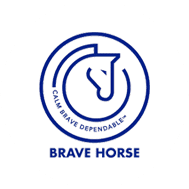So, you’ve done your research and decided to try giving your horse CBD. Now you need to decide how to administer it to your beloved partner, but how do you decide which of the countless products is best for him? Ultimately, you and your horse will have to decide, but understanding the differences between two of the main methods of ingestion is helpful in guiding you to making the best choice.
Because research and data are currently limited, recommendations for the appropriate method of CBD ingestion vary. Ultimately, consumers want to gain maximum benefits from the CBD in whichever form their horses consume it, and choosing the appropriate ingestion form plays an important role in maximizing those benefits.
There are two common methods of CBD ingestion for horses. It can be consumed as
1) an ingredient in a chewable or 2) oromucosally in a tincture. In chewables, CBD is mixed in with other ingredients that have favorable tastes and can be administered like a treat. In tinctures, CBD is dissolved in an oil (often olive oil or hemp oil) and typically administered under the tongue of the horse using a dropper or syringe.
When your horse consumes CBD as an ingredient in a chewable, the CBD travels through the digestive system just like the rest of the ingredients in the treat. It is exposed to all the acids and enzymes and other digestive juices in the stomach before the body sends it to the liver to be metabolized. In this first pass through the liver, much of the CBD is broken down, while some makes its way into the bloodstream.
When your horse consumes CBD as a tincture, the CBD is absorbed through mucosal tissue in his mouth and passes directly into the bloodstream.
The second ingestion method clearly provides the most direct route to the bloodstream, which also allows the CBD to begin interacting within the endocannabinoid system (ECS) faster. The tincture method also allows more of the consumed CBD to be used by the body before it is broken down and eliminated as waste, which makes it possible for the horse to consume less CBD than he would have to in a CBD chewable to achieve the same potential effects. Less of the CBD is discarded before it makes it to the bloodstream where it can travel throughout the body and interact with receptors in the ECS.
The tincture method is appealing from a logical standpoint and can be a perfectly appropriate way to administer CBD to your horse. Many people start with this method as it is faster and more direct. In practice, not all horses may be amenable to this, which is why CBD chewables can be a great option too. Though some of the CBD is lost in digestion with chewables, the rest of it is still viable, and the method of administration is often more palatable for horses and easier for their owners.
Choosing the best way to administer CBD to your horse may take some trial and error, but understanding two common methods of ingestion can serve as a solid starting point.
References:
• Bartlett, J. A.; van der Voort Maarschalk, K. Understanding the Oral Mucosal Absorption and Resulting Clinical Pharmacokinetics of Asenapine. AAPS PharmSciTech, 2012, 13, 1110–1115. • Cohen, L.A. Effect of Oral Cannabidiol (CBD) Supplementation in Horses and Effect on Feed Intake, Behavior and Blood Parameters. Master of Science Thesis. Tarleton State University: Stephenville, TX, 2021. • J. Med. Chem. 2020, 63, 21, 12137–12155
